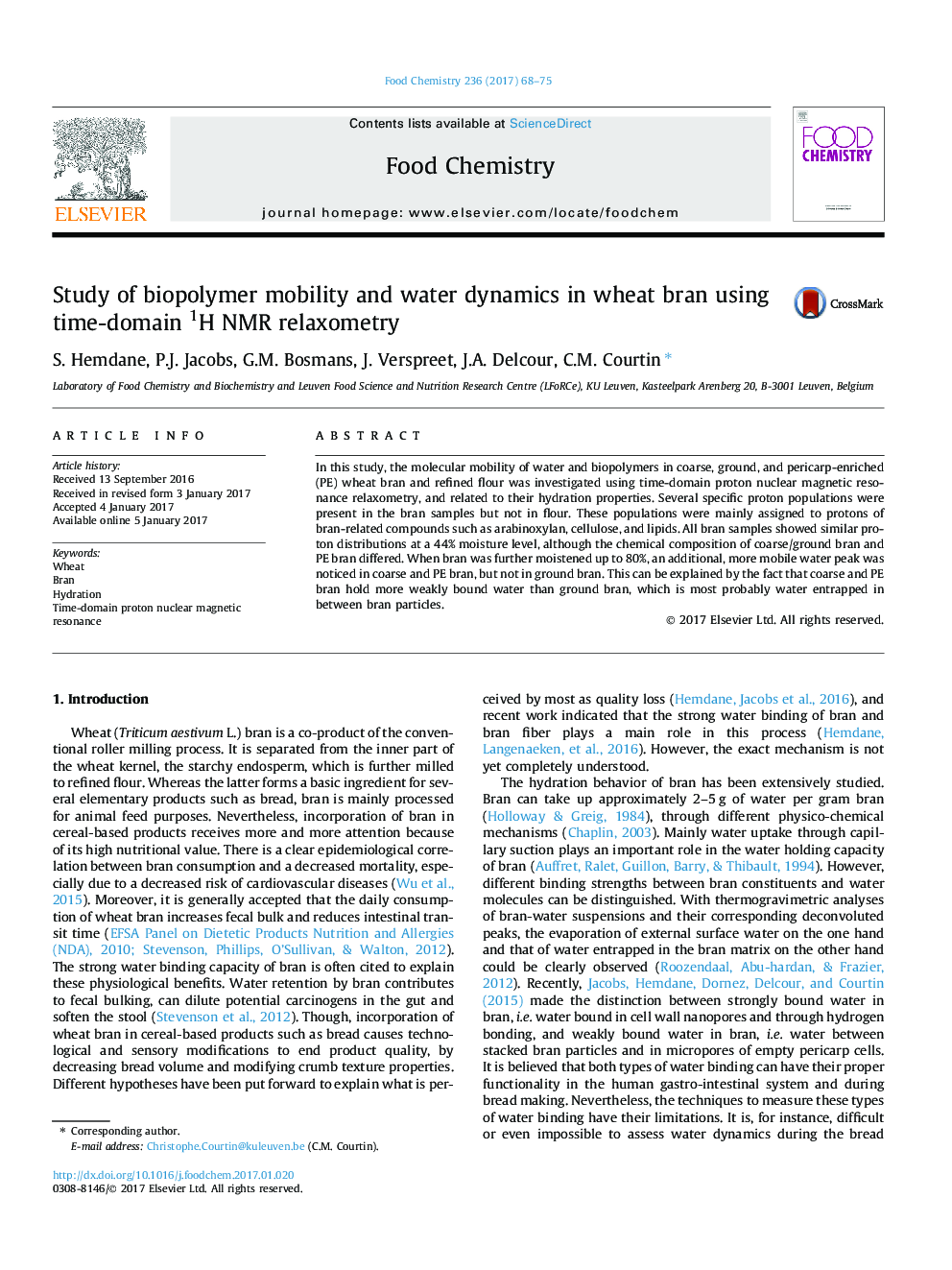| Article ID | Journal | Published Year | Pages | File Type |
|---|---|---|---|---|
| 5132924 | Food Chemistry | 2017 | 8 Pages |
â¢Differences in proton populations exist between bran and flour using TD 1H NMR.â¢Water binding behavior of bran observed with TD 1H NMR differs from that of flour.â¢These observations can be linked to results obtained with conventional methods.
In this study, the molecular mobility of water and biopolymers in coarse, ground, and pericarp-enriched (PE) wheat bran and refined flour was investigated using time-domain proton nuclear magnetic resonance relaxometry, and related to their hydration properties. Several specific proton populations were present in the bran samples but not in flour. These populations were mainly assigned to protons of bran-related compounds such as arabinoxylan, cellulose, and lipids. All bran samples showed similar proton distributions at a 44% moisture level, although the chemical composition of coarse/ground bran and PE bran differed. When bran was further moistened up to 80%, an additional, more mobile water peak was noticed in coarse and PE bran, but not in ground bran. This can be explained by the fact that coarse and PE bran hold more weakly bound water than ground bran, which is most probably water entrapped in between bran particles.
